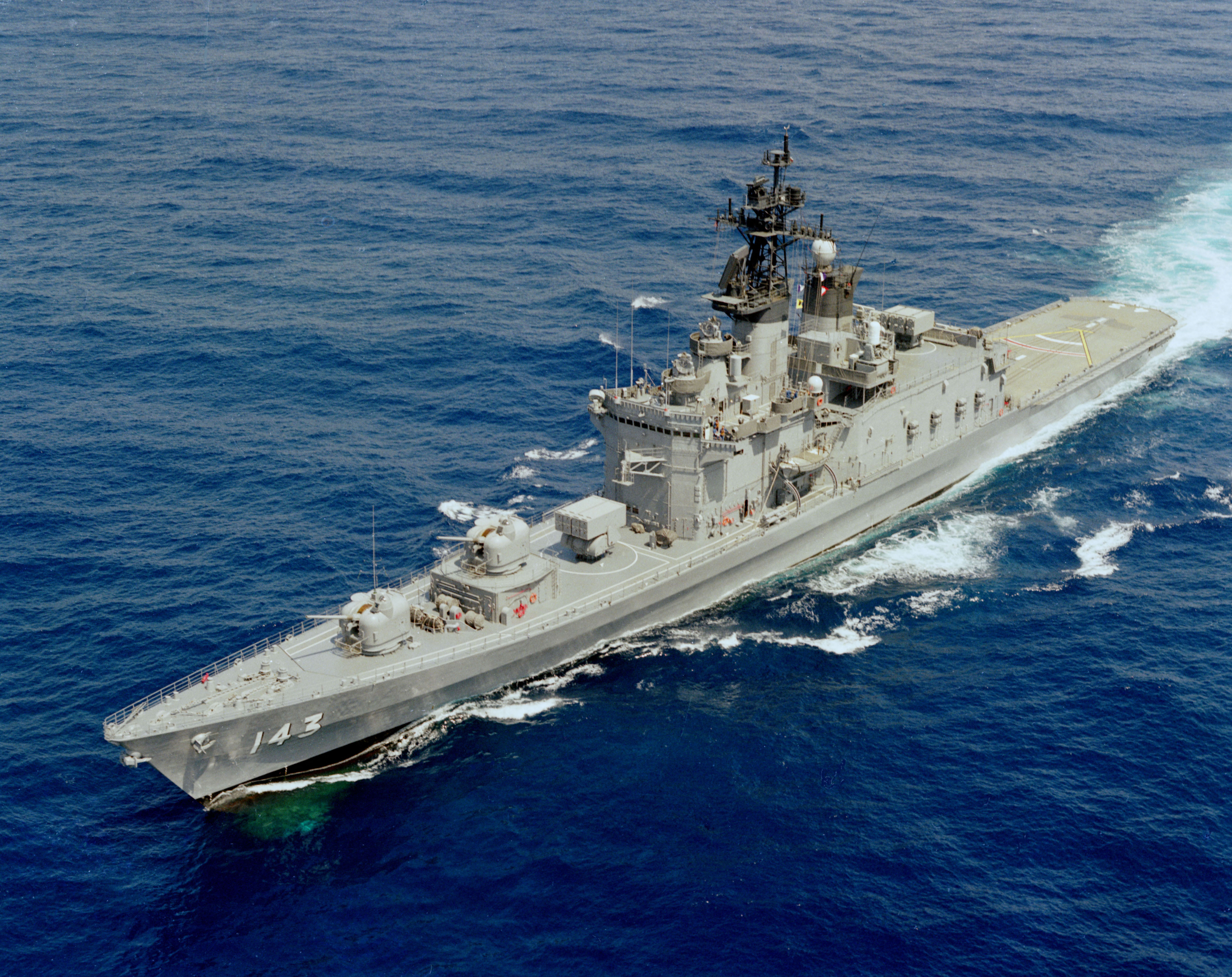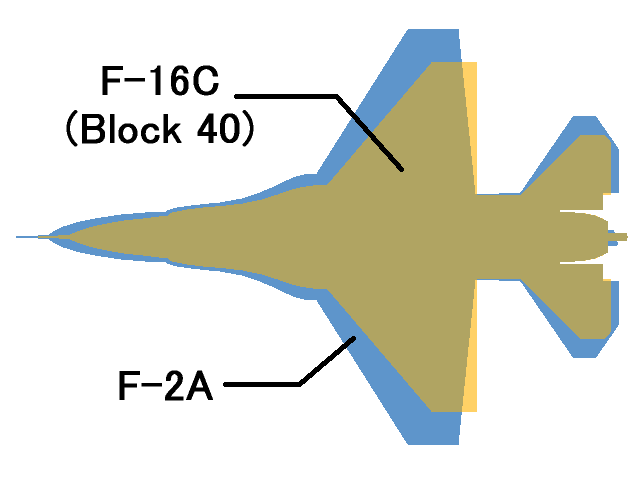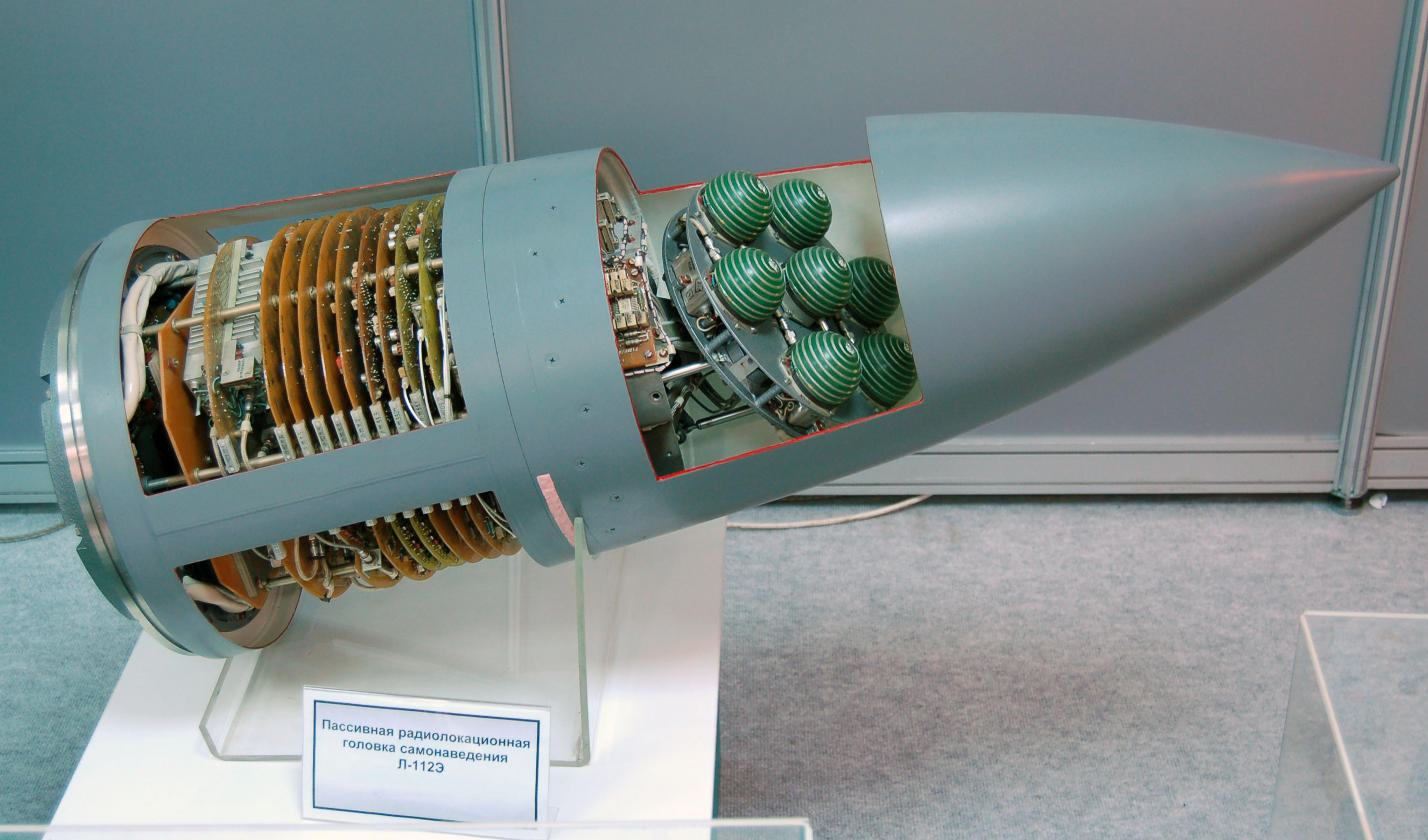|
ASM-3
The ASM-3 is a supersonic anti-ship missile being developed by Mitsubishi Heavy Industries to replace the ASM-1 and ASM-2 missiles. The major launch platform is the Mitsubishi F-2. Planned Initial Operational Capability was 2016. The missile will be used by the Japan Air Self-Defense Force. It can attack not only ships, but also ground targets. Since the original model of ASM3 had a short range of 200 km, it was not deployed immediately, and an improved model was developed from 2017 to 2020, and deployment of (ASM3a) with a range of about 300~400 km started in 2021. In the future, it may also have a range of 400 km or more. In November 2015, Japan's Ministry of Defense announced it would conduct a live-fire experiment of the XASM-3 in 2016, targeting the decommissioned ship JDS Shirane. In February 2017, an F-2 carried out a jettison test of the missile as a precursor to a live firing. Mass production was planned to begin in 2018 but stopped due to the further upgrade progr ... [...More Info...] [...Related Items...] OR: [Wikipedia] [Google] [Baidu] |
Type 93 Air-to-Ship Missile
The Type 93 Air-to-Ship Missile (93式空対艦誘導弾, ASM-2) is an air-to-ship missile developed in Japan. This missile is used by the Japan Air Self-Defense Force. The ASM-2 will be replaced by the ASM-3. See also * Type 80 Air-to-Ship Missile * Type 88 Surface-to-Ship Missile * Type 90 Ship-to-Ship Missile * ASM-3 The ASM-3 is a supersonic anti-ship missile being developed by Mitsubishi Heavy Industries to replace the ASM-1 and ASM-2 missiles. The major launch platform is the Mitsubishi F-2. Planned Initial Operational Capability was 2016. The missile w ... Anti-ship missiles of Japan Anti-ship cruise missiles Military equipment introduced in the 1990s {{Missile-stub ... [...More Info...] [...Related Items...] OR: [Wikipedia] [Google] [Baidu] |
JDS Shirane
JS ' (DDH-143) was the lead ship of the Shirane-class destroyer, her eponymous class of destroyer in the Japan Maritime Self-Defense Force (JMSDF). Construction and career The vessel was Keel laying, laid down by Ishikawajima-Harima in Tokyo on February 25, 1977; Launched (ship), launched on September 18, 1978; and Commissioned (ship), commissioned on March 17, 1980. In 2011, after the 2011 Tōhoku earthquake and tsunami, she was used as a relief ship. In 2012, along with attending RIMPAC, she also attended Fleet Week, a United States naval tradition in which naval ships are showcased. On December 15, 2007, a fire broke out on board ''Shirane'' near the rudder house as she was anchored at Yokosuka. It took seven hours to extinguish and injured four crew members. ''Shirane'' visited Baltimore on her way to New York City as part of Fleet Week 2012. She was open to visitors for a few days. she passed by the Freedom Tower as part of the ship parade in New York Harbor and the Hud ... [...More Info...] [...Related Items...] OR: [Wikipedia] [Google] [Baidu] |
Mitsubishi F-2
The Mitsubishi F-2 is a multirole fighter derived from the General Dynamics F-16 Fighting Falcon, and manufactured by Mitsubishi Heavy Industries and Lockheed Martin for the Japan Air Self-Defense Force, with a 60/40 split in manufacturing between Japan and the United States. The basis of the F-2's design is the F-16 Agile Falcon, an unsuccessful offer by General Dynamics to provide a low-cost alternative for the Advanced Tactical Fighter (ATF) competition. Production started in 1996 and the first aircraft entered service in 2000. The first 76 aircraft entered service by 2008, with a total of 98 airframes produced. The first active electronically scanned array (AESA) radar on a combat aircraft was the J/APG-1 introduced on the Mitsubishi F-2 in 1995. The F-2 is nicknamed "Viper Zero", a reference to the F-16's unofficial nickname of "Viper" and the Mitsubishi A6M Zero. Development US–Japan negotiations The JASDF and its contractors considered developing a Japanese-designed, J ... [...More Info...] [...Related Items...] OR: [Wikipedia] [Google] [Baidu] |
Type 80 Air-to-Ship Missile
Type 80 Air-to-Ship Missile (80式空対艦誘導弾, ASM-1) is an air-launched anti-ship missile developed by Mitsubishi Heavy Industries. It entered service with the Japan Air Self-Defense Force in 1980. The major launch platforms for the Type 80 are the Mitsubishi F-1, JASDF F-4EJ ''Kai'' and Mitsubishi F-2. The missile is primarily intended as an air-launched coastal defence weapon. In fact it is somewhat more capable than this, able to engage both sea and land targets such as buildings and bridges. The Type 80 also serves as the basis of several other weapons; it forms part of the ground-launched SSM-1 system and was also developed into the Type 88 SSM (Surface-to-Ship Missile), the Type 90 SSM (Ship-to-Ship Missile), and the 91 and 93 ASMs (Air-to-Ship Missile). The ASM-1 will be replaced by the ASM-3 currently in development. See also * Type 88 Surface-to-Ship Missile * Type 90 Ship-to-Ship Missile The Type 90 Ship-to-Ship Missile (90式艦対艦誘導弾, SSM ... [...More Info...] [...Related Items...] OR: [Wikipedia] [Google] [Baidu] |
Ramjet
A ramjet, or athodyd (aero thermodynamic duct), is a form of airbreathing jet engine that uses the forward motion of the engine to produce thrust. Since it produces no thrust when stationary (no ram air) ramjet-powered vehicles require an assisted take-off like a rocket assist to accelerate it to a speed where it begins to produce thrust. Ramjets work most efficiently at supersonic speeds around and can operate up to speeds of . Ramjets can be particularly useful in applications requiring a small and simple mechanism for high-speed use, such as missiles. The US, Canada, and UK had widespread ramjet powered missile defenses during the 1960s onward, such as the CIM-10 Bomarc and Bloodhound. Weapon designers are looking to use ramjet technology in artillery shells to give added range; a 120 mm mortar shell, if assisted by a ramjet, is thought to be able to attain a range of . They have also been used successfully, though not efficiently, as tip jets on the ends of helicopt ... [...More Info...] [...Related Items...] OR: [Wikipedia] [Google] [Baidu] |
YJ-12
The YJ-12 () is a Chinese supersonic anti-ship cruise missile. Description The YJ-12 is an air-launched missile that resembles a lengthened Kh-31 and is close in shape to the GQM-163 Coyote aerial target. A 2011 article in the United States Naval War College Review credited the "YJ-91/YJ-12" with a range of 400 km and a 205 kg high explosive warhead, compared to the range of a Harpoon anti-ship missile. Furthermore, an aircraft could launch the "YJ-91/YJ-12" while still 230 km beyond the range of SM-2 and Sparrow anti-air missiles, which have ranges of less than 170 km. According to Chinese sources, the YJ-12 has a speed of around Mach 2 if launched from low altitude and up to Mach 3.2 if launched from high altitude, with a maximum range of around depending on launch altitude; terminal attack altitude is 15 meters. In a September 2014 article published in Joint Forces Quarterly, the missile was credited with a range of up to 250 km and a speed of Mac ... [...More Info...] [...Related Items...] OR: [Wikipedia] [Google] [Baidu] |
Anti-ship Missile
An anti-ship missile (AShM) is a guided missile that is designed for use against ships and large boats. Most anti-ship missiles are of the sea skimming variety, and many use a combination of inertial guidance and active radar homing. A good number of other anti-ship missiles use infrared homing to follow the heat that is emitted by a ship; it is also possible for anti-ship missiles to be guided by radio command all the way. The first anti-ship missiles, which were developed and built by Nazi Germany, used radio command guidance.https://airandspace.si.edu/collection-objects/bomb-guided-fritz-x-x-1/nasm_A19840794000#:~:text=The%20Fritz%20X%2C%20also%20known,the%20Henschel%20Hs%20293%20missile. These saw some success in the Mediterranean Theatre during 1943–44, sinking or heavily damaging at least 31 ships with the Henschel Hs 293 and more than seven with the ''Fritz X'', including the Italian battleship ''Roma'' and the light cruiser . A variant of the HS 293 had a TV ca ... [...More Info...] [...Related Items...] OR: [Wikipedia] [Google] [Baidu] |
Type 88 Surface-to-Ship Missile
The Type 88 Surface-to-Ship Missile (88式地対艦誘導弾, SSM-1) is a truck-mounted anti-ship missile developed by Japan's Mitsubishi Heavy Industries in the late 1980s. It is a land-based version of the air-launched Type 80 (ASM-1) missile; in turn it was developed into the ship-launched Type 90 (SSM-1B) missile. The Japan Ground Self-Defense Force bought 54 transporter erector launchers, each carrying six Type 88 missiles, for use as coastal batteries. With a range of , high subsonic speed and warhead, it is similar to the US Harpoon missile. In 2015, an upgrade of the Type 88 became operational called the Type 12. The Type 12 features INS with mid-course GPS guidance and better precision due to enhanced TERCOM and target discrimination capabilities. The weapon is networked, where initial and mid-course targeting can be provided by other platforms, and also boasts shorter reload times, reduced lifecycle costs, and a range of . [...More Info...] [...Related Items...] OR: [Wikipedia] [Google] [Baidu] |
Type 90 Ship-to-Ship Missile
The Type 90 Ship-to-Ship Missile (90式艦対艦誘導弾, SSM-1B) is a ship-launched anti-ship missile developed by Japan's Mitsubishi Heavy Industries that entered service in 1990. It is a naval version of the truck-launched Type 88 (SSM-1) missile, which in turn was developed from the air-launched Type 80 (ASM-1) missile. The Japan Maritime Self-Defense Force bought 384 of the missiles which it fitted to its ''Akizuki'', ''Takanami'', Hayabusa, and ''Murasame''-class ships. With a range of , high subsonic speed and warhead, the Type 90 is similar to the US's RGM-84 Harpoon missile, and is replacing Harpoon on Japanese ships. See also * Type 80 Air-to-Ship Missile * Type 88 Surface-to-Ship Missile * Type 93 Air-to-Ship Missile * XASM-3 The ASM-3 is a Supersonic speed, supersonic anti-ship missile being developed by Mitsubishi Heavy Industries to replace the Type 80 Air-to-Ship Missile, ASM-1 and Type 93 Air-to-Ship Missile, ASM-2 missiles. The major launch platform is the ... [...More Info...] [...Related Items...] OR: [Wikipedia] [Google] [Baidu] |
Gifu Air Field
is a military air base of the Japan Air Self-Defense Force . It is located in Kakamigahara City, east of Gifu in the Gifu Prefecture, Japan. It is home to the Kakamigahara Air and Space Museum Kakamigahara Air and Space Museum is an aviation museum located in Kakamigahara in Gifu Prefecture in Japan. It is at Gifu Air Field of the Japan Air Self-Defense Force The , , also informally referred to as the Japanese Air Force, is the a .... Units * Air Defense Command ** Central Air Defense Force *** 4th Air Defence Missile Group **** 13th Fire Unit **** 15th Fire Unit * Air Development and Test Command ** Air Development and Test Wing * Air Material Command ** 2nd Air Depot References External links Gifu Air Base Airports in Japan Transport in Gifu Prefecture Japan Air Self-Defense Force bases Buildings and structures in Gifu Prefecture Kakamigahara, Gifu {{Gifu-geo-stub ... [...More Info...] [...Related Items...] OR: [Wikipedia] [Google] [Baidu] |
Missile Designation
In 1963, the United States Department of Defense, U.S. Department of Defense established a designation system for rockets and guided missiles jointly used by all the United States armed services. It superseded the separate designation systems the Air Force and Navy had for designating US guided missiles and drones, but also a short-lived interim USAF system for guided missiles and rockets. History On 11 December 1962, the U.S. Department of Defense issued Directive 4000.20 “Designating, Redesignating, and Naming Military Rockets and Guided Missiles” which called for a joint designation system for rockets and missiles which was to be used by all armed forces services. The directive was implemented via Air Force Regulation (AFR) 66-20, Army Regulation (AR) 705-36, Bureau of Weapons Instruction (BUWEPSINST) 8800.2 on 27 June 1963. A subsequent directive, DoD Directive 4120.15 "Designating and Naming Military Aircraft, Rockets, and Guided Missiles", was issued on 24 November 1971 an ... [...More Info...] [...Related Items...] OR: [Wikipedia] [Google] [Baidu] |
AS-17 Krypton
The Kh-31 (russian: Х-31; AS-17 'Krypton') is a Russian air-to-surface missile carried by aircraft such as the MiG-29 or Su-27. It is capable of Mach 3.5 and was the first supersonic anti-ship missile that could be launched by tactical aircraft. There are several variants; the Kh-31 is best known as an anti-radiation missile (ARM) but there are also anti-shipping and target drone versions. There has been talk of adapting it to make an " AWACS killer", a long-range air-to-air missile. Development The proliferation of surface-to-air missiles (SAMs) has made the Suppression of Enemy Air Defences (SEAD) a priority for any modern air force intending offensive action. Knocking out air search radars and fire control radars is an essential part of this mission. ARMs must have sufficient range that the launch platform is out of range of the SAMs, high speed to reduce the risk of being shot down and a seeker that can detect a range of radar types, but they do not need a particularly b ... [...More Info...] [...Related Items...] OR: [Wikipedia] [Google] [Baidu] |


.jpg)

